24 Hours Hotline: +86 137-3541-1378
Email:xian@tripstoshanghai.com
24 Hours Hotline: +86 137-3541-1378
Email:xian@tripstoshanghai.com
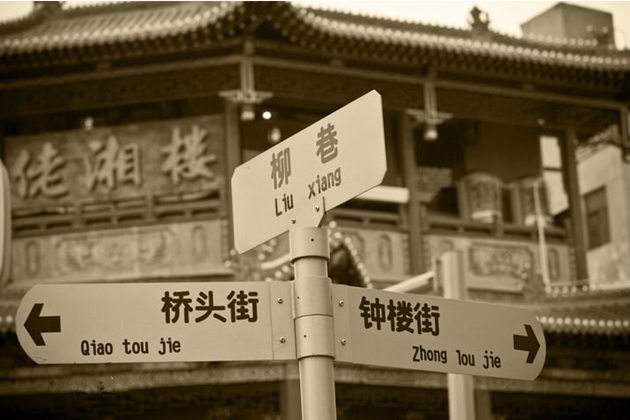
Taiyuan is an ancient city with more than 2500 years of urban history, dating back from 497 BC. It was the capital or secondary capital of Zhao, Former Qin, Eastern Wei, Northern Qi, Northern Jin, Later Tang, Later Jin, Later Han, Northern Han. Its strategic location and rich history make Taiyuan one of the economic, political, military, and cultural centers of Northern China.
Pre-Qin dynasty history
From about 859 BC the area around modern-day Taiyuan was occupied by the Rong people. In 662 BC the Rong were driven out by the Di people.
During the Spring and Autumn period, the state of Jin emerged to the south of Taiyuan. In 541 BC, the Jin army led by General Xun Wu, drove out the Di Tribes, and Taiyuan became part of the state of Jin.
In 497 BC,the first ancient city of Jinyang was built around the southern Jinyuan District of present-day Taiyuan, by Dong Anyu, who was a steward of Zhao Jianzi, an upper-level official of the state of Jin.
During the Battle of Jinyang in 453 BC, Zhi Yao diverted the flow of the Fen River to inundate the city of Jinyang, caused significant damage to the Zhao. Later, Zhao Xiangzi alerted Wei and Han, who both decided to ally with Zhao. On the night of May 8, 453 BC, Zhao troops broke the dams of the Fen River and let the river flood the Zhi armies, and eventually annihilated the Zhi army, with the help from Wei and Han.
After the Tripartition of Jin in 403 BC, the state of Jin, then a strong power in Northern China, was divided into three smaller states of Han, Zhao and Wei. Jinyang, was chosen as the capital of Zhao, by Zhao Ji. Later, the capital of Zhao was moved to Handan.
Qin dynasty
In 248 BC, the state of Qin attacked Zhao under General Meng'ao, and obtained the area around Jinyang from Zhao. Qin set up the Commandery of Taiyuan, with the city of Jinyang as its administrative center. Although, the name Taiyuan had appeared in historic records before, potentially referring to different regions in nowadays southern and central Shanxi, this was the first time Taiyuan was officially used to refer to present-day Taiyuan.
In 246 BC, there was an uprising in Jinyang, and it was quickly quelled by Meng'ao.
In 221 BC, Qin conquered the rest of China, and officially started the first imperial dynasty of China. Qin established thirty-six commanderies on its territory, and Taiyuan was one of them.
Han dynasty and Three Kingdoms
In 202 BC, Emperor Gaozu Liu Bang established the Han dynasty. During that period, the administrative system of Commanderies in Qin dynasty was abolished, the two Commanderies of Taiyuan and Yanmen (???) were combined as the vassal state of Han (??) under the rule of King Xin of Han (???).
Later, King Xin of Han moved the capital from Jinyang to Mayi (present-day Shuozhou) with the approval from the emperor Gaozu. However, King Xin of Han conspired with the Xiongnu against Gaozu, and attacked Han for many years. In 196 BC, King Xin of Han was killed after he lost a battle. And the vassal state of Han was replaced by the vassal state of Dai, with Jinyang as the administrative center of Dai.
During the tumultuous Three Kingdoms, the population of Taiyuan decreased significantly due to constant warfares. Taiyuan was ruled by Gongsun Zan, Yuan Shao, and then by Cao Cao, and was part of Cao Wei afterwards.
Jin dynasty and Sixteen Kingdoms
During the Jin dynasty, Taiyuan was again changed into a vassal state. Following the ending of the Jin dynasty, ethnic minority peoples settled a series of short-lived sovereign states in northern China, commonly referred to as Sixteen Kingdoms. Taiyuan was part of Former Zhao, Later Zhao, Former Qin, Former Yan, Former Qin again, Western Yan, and Later Yan chronologically.
In 304, Liu Yuan founded the Xiongnu state of Former Zhao, whose army raided the area around Taiyuan for years and eventually obtained Taiyuan in 316.In 319, Taiyuan became part of Later Zhao, founded by Shi Le. Later, Taiyuan was obtained by Former Yan in 358, and by Former Qin in 370. Former Qin was founded by Fu Jian (??) in 351 with capital of Chang'an.
Fu Jian died in 384. His son Fu Pi declared himself an emperor in 385, with Jinyang (central city of Taiyuan) as the capital. But the next year, Fu Pi was defeated by the Western Yan prince Murong Yong in 386, and Taiyuan became part of Western Yan.In 394, Taiyuan was conquered by Later Yan army.
Southern and Northern Dynasties
In 386, Tuoba Gui founded Northern Wei. In 396, Northern Wei expanded to Taiyuan.
In 543, Eastern Wei was founded by Gao Huan, with the capital at the city of Ye, and Taiyuan as the alternative capital, where the Mansion of the "Great Chancellor" Gao Huan was located.
In 550, Northern Qi was founded by Gao Yang, who maintained his father Gao Huan's choice of Taiyuan as the alternative capital. The Buddhist Tianlongshan Grottoes of Taiyuan started during this period, and continued for many centuries afterwards.
In 577, Taiyuan was conquered and became part of Northern Zhou.
Sui dynasty
In 581, Emperor Wen of Sui founded Sui dynasty. Jinyang was first the administrative center of Bing Zhou, which was changed into Taiyuan Commandery. In 617, Li Yuan rose in rebellion based in Taiyuan, and expanded quickly.
Tang dynasty
In 618, Li Yuan founded Tang dynasty, which is generally considered a golden age of Chinese civilization. Taiyuan expanded significantly during the Tang dynasty, partly because Taiyuan was the military base of the founding emperors Li Yuan and Li Shimin. As Li Shimin wrote in 619: "Taiyuan, the base of the imperial regime and the foundation of the state."
In 690, Wu Zetian set Taiyuan as the Northern Capital, (Beidu), one of the three capitals, along with Chang'an and Luoyang, as depicted in the poem by Li Bai, ("The king of the heaven has three capitals, the Northern capital is one of them."). In 742 AD, Emperor Xuanzong of Tang changed further to Beijing. During Tang Dynasty, the title Northern Capital to Taiyuan had been endowed or abolished multiple times.
Five Dynasties
In 923, Li Cunxu, son of Li Keyong, founded Later Tang with capital of Daming, and soon conquered most of North China, and ended Later Liang. Afterwards, Li Cunxu moved the capital from Daming to Luoyang, and Taiyuan was set as a provisional capital, titled "Beijing" (Northern Capital).
In 936, Shi Jingtang established Later Jin in Taiyuan with the help from Khitan Liao dynasty. The next year, Shi Jingtang moved the capital from Taiyuan to Luoyang, and then to Kaifeng, and Taiyuan became a provisional northern capital ("Beijing") again.
Song dynasty
Zhao Kuangyin (Emperor Taizu of Song ) established the Song dynasty and embarked on the campaign of re-unification of China. Using a power struggle at the Northern Han court Taizu moved against it in the late 968. By early 969 his armies encircled Taiyuan and defeated the reinforcements sent by the Khitan. However, an attempt to flood the city failed. The siege was lifted after three months, as heavy rains caused diseases in the besieging army, the supplies were running low, and another Khitan relief force was advancing towards the city.
Taizu launched the second invasion of Northern Han in September 969, but the armies were recalled after his death (November 14,969).
Taizu’s brother Taizong subjugated the last independent kingdoms in the south of China by 978, and in 979 launched the third campaign against the Northern Han and its overlord the Khitan state of Liao. Using the north-western route instead of the southern (used in the previous campaigns) the armies of Taizong defeated a major Liao force. Isolated, the Northern Han resisted for only fifteen days before surrendering. In contrast to the mild policies of his brother, Taizong dealt harshly with the city. He ordered the flooding of Taiyuan by releasing the Fen River, and set the city on fire. The former capital was downgraded from the prefecture to county town status.
It was not until 982 that a new city was founded on the banks of the Fen River.[12] The oldest existing building in Taiyuan today is the Temple of the Goddess inside the Jin Ci Complex. It was originally built in 1023 and reconstructed in 1102.
From 1027 one of the two private markets for Tangut goods, particularly salt, operated in Taiyuan. During the Song period many people, including the family of Wang Anshi, migrated south.
Jin dynasty
The Jurchen Jin dynasty was founded in 1115, and in 1125, Taiyuan was conquered by Jin. The same year, after the conquest of North China by Jin, the capital of Song was shifted to Lin'an, which marked the end of Northern Song, and the start of the Southern Song dynasty.
Yuan dynasty
The Mongol empire emerged in 1206 under the leadership of Genghis Khan, and it expanded quickly. In 1218, Taiyuan was conquested by the Mongol army led by General Muqali. Kublai Khan established the Yuan dynasty in 1271, and the administrative area of Taiyuan Lu (???) was expanded.
The Taoist Longshan Grottoes was built in early Yuan dynasty, initiated by Taoist monk Song Defang (???).
Ming dynasty
In 1368, Zhu Yuanzhang established the Ming dynasty, and Taiyuan was obtained from Yuan, by General Xu Da. The Ming dynasty installed Nine Military Garrisons to defend the northern territory during the reign of the Hongzhi Emperor, which included the Garrison of Taiyuan (???). In the ending period of Ming dynasty, the rebel leader Li Zicheng conquered Taiyuan, and Taiyuan became part of Great Shun temporarily in 1644.
Qing dynasty
In 1644, Shunzhi founded the Qing dynasty and defeated the Great Shun army in Taiyuan in the same year.
In 1900 the Taiyuan Massacre occurred, when a number of western missionaries were killed.
Republic of China
The warlord Yan Xishan retained control of Shanxi from the Xinhai Revolution in 1911 to the end of the Chinese Civil War in 1949. Taiyuan consequently flourished as the center of his comparatively progressive province and experienced extensive industrial development. It was linked by rail both to the far southwest of Shanxi and to Datong in the north. Until the end of the Chinese Civil War in 1949 Yan's arsenal in Taiyuan was the only factory in China sufficiently advanced to produce field artillery. Because Yan succeeded in keeping Shanxi uninvolved in most of the major battles between rival warlords that occurred in China during the 1910s and 1920s, Taiyuan was never taken from Yan by an invading army until the Japanese conquered it in 1937.
Yan was aware of the threat posed by the Japanese; and, in order to defend against the impending Japanese invasion of Shanxi, Yan entered into a secret "united front" agreement with the Communists in November 1936. After concluding his alliance with the Communists he allowed agents under Zhou Enlai to establish a secret headquarters in Taiyuan. Yan, under the slogan "resistance against the enemy and defense of the soil" attempted to recruit young, patriotic intellectuals to his government from across China, so that by 1936 Taiyuan became a gathering point for anti-Japanese intellectuals who had fled from Beijing, Tianjin, and Northeast China. A representative of the Japanese army, speaking of the final defense of Taiyuan, said that "nowhere in China have the Chinese fought so obstinately".
From the Japanese occupation of Taiyuan to the Japanese surrender in 1945, the Japanese continued to develop Taiyuan's industries and resources. After the Japanese army in Shanxi surrendered to Yan Xishan, 10,000–15,000 Japanese troops, including both enlisted men and officers, decided to fight for Yan rather than return to Japan. Yan also retained the services of experienced and foreign-educated Japanese technicians and professional staff brought into Taiyuan by the Japanese to run the complex of industries that they had developed around Taiyuan.
Taiyuan Campaign
Taiyuan was the last area in Shanxi to resist Communist control during the final stages of the Chinese Civil War. The city fell on April 22, 1949, after the Communists surrounded Taiyuan and cut it off from all means of land and air supply, and taking the city required the support of 1,300 pieces of artillery. Many Nationalist officers committed suicide when the city fell. The dead included Yan's nephew-in-law, who was serving as governor, and his cousin, who ran his household. Liang Huazhi, the head of Yan's "Patriotic Sacrifice League", had fought for years against the Communists in Shanxi until he was finally trapped in the massively fortified city of Taiyuan. For six months Liang led a savage resistance, leading both Yan's remaining forces and those of the warlord's thousands of Japanese mercenaries. When Communist troops finally broke into the city and began to occupy large sections of it, Liang barricaded himself inside a large, fortified prison complex filled with Communist prisoners. In a final act of self-sacrifice, Liang set fire to the prison and committed suicide as the entire compound burned to the ground.
Prev: No previous link
Next: Taiyuan Transportation
Wechat: Chinaprivatetour
24 Hours Hotline:
+86 137-3541-1378
* Authentic Experiences: Genuine local experiences that immerse you in the true essence of Xi'an and beyond.
* Safety First: Highest safety standards with secure activities and reliable transportation.
* Customizable Tours: Flexible itineraries tailored to your interests and needs.
* Local Expertise: In-depth knowledge of Xi'an and China, offering exclusive insights.
* Professional Guides: Licensed bilingual guides with over 5 years of experience.
* Comfortable Travel: Experienced drivers and well-maintained vehicles for a smooth journey.
* Sustainable Tourism: Commitment to responsible tourism and supporting local communities.
* Customer-Focused: Personalized service and continuous improvement based on your feedback.
* Free Cancellation: Cancel up to 24 hours before travel for flexibility and peace of mind.
* 24/7 Support: Round-the-clock assistance for any questions or help needed.
(Your Privacy is Protected)
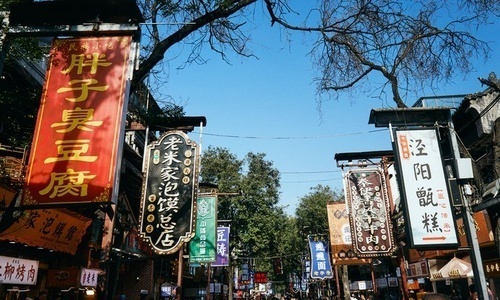 Xi'an Muslim Quarter Travel Guide: Street Food, Culture & Nightlife
Xi'an Muslim Quarter Travel Guide: Street Food, Culture & Nightlife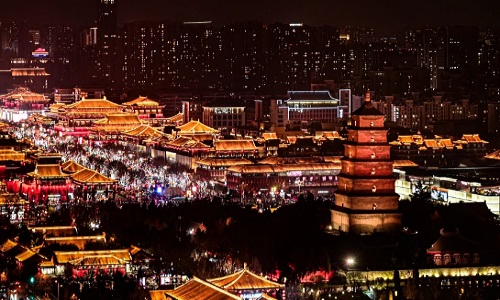 Exploring Grand Tang Mall Xi'an: Shopping, Dining, and Entertainment in the Heart of the Ancient City
Exploring Grand Tang Mall Xi'an: Shopping, Dining, and Entertainment in the Heart of the Ancient City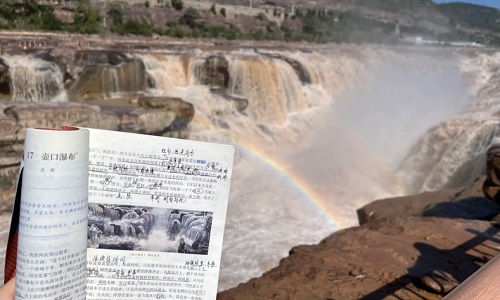 Hukou Waterfall Travel Guide: Visiting the Yellow River’s Most Spectacular Hukou Waterfall from Xi'an
Hukou Waterfall Travel Guide: Visiting the Yellow River’s Most Spectacular Hukou Waterfall from Xi'an Huashan Mountain Travel Guide: Hiking the Most Dangerous and Beautiful Peak in China
Huashan Mountain Travel Guide: Hiking the Most Dangerous and Beautiful Peak in China The Song of Everlasting Sorrow: A Timeless Tale of Love and Tragedy in Xi'an
The Song of Everlasting Sorrow: A Timeless Tale of Love and Tragedy in Xi'an Xi’an Qinling Wildlife Park Travel Guide: Explore the Best Zoo Experience in Xi’an
Xi’an Qinling Wildlife Park Travel Guide: Explore the Best Zoo Experience in Xi’an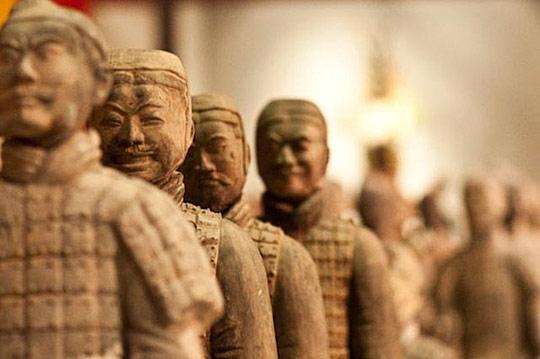 Discover the Terracotta Warriors in Xi’an: A Complete Guide to China’s Ancient Army
Discover the Terracotta Warriors in Xi’an: A Complete Guide to China’s Ancient Army 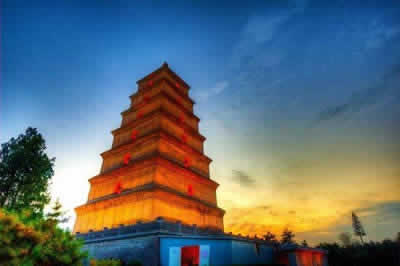 Big Wild Goose Pagoda
Big Wild Goose Pagoda1 to 1 tailor-made service from our professional travel advisors for the most sophisticated
Constantly excellent reviews for attraction, hotel and service Competitive price
Local experts provide quality tours Best selected knowledgeable local guides Authentic local restaurants
7*24 hours available to create you a worry-free tour. No Hidden Fees and absolutely no pressure to buy. Secured









Copyright © 2017 www.xianprivatetour.com All rights reserved. 浙ICP备18056007号-6